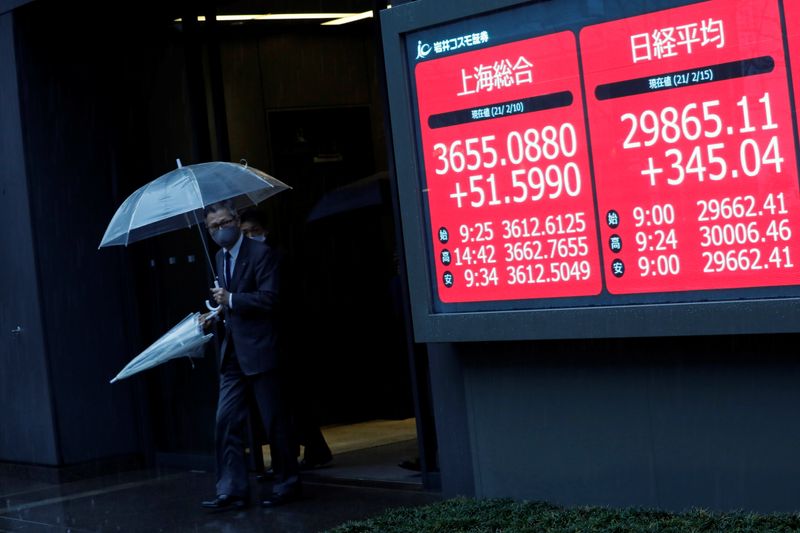This post was originally published on this site

Still, bigger gains were limited as markets remained on edge over worsening economic trends and rising interest rates in the rest of the world, particularly the U.S.
Japan’s Nikkei 225 index rose 0.2%, while the broader TOPIX cut earlier losses after the BOJ held interest rates at ultra-low levels and signaled no change to its quantitative easing and yield curve control policies.
The move points to Japanese monetary conditions remaining accommodative in the near-term, which in turn makes local stocks appear far more attractive than their global peers.
This notion put both the Nikkei and the TOPIX at 33-year highs this week, after a stellar rally over the past month. Optimism over the Japanese economy also helped, as the BOJ forecast relatively strong growth in 2023.
China’s Shanghai Shenzhen CSI 300 and Shanghai Composite indexes rose about 0.4% each on Friday, extending gains into a second straight session as the People’s Bank of China began trimming lending rates to support economic growth.
The PBOC cut short and medium-term rates this week, and is widely expected to trim its benchmark loan prime rate on Tuesday. The move comes amid growing uncertainty over a post-COVID Chinese economic recovery, following a string of weak indicators for April and May.
But the recent rate cuts, coupled with promises of more supportive measures from the Government, have ramped up hopes that the Chinese economy will pick up in the second half of the year.
Optimism over China spilled over into other, exposed markets. Hong Kong’s Hang Seng index rose 0.8%, while Australia’s ASX 200 added 0.8% on strength in heavyweight mining stocks.
India’s Nifty 50 and BSE Sensex 30 indexes opened about 0.4% higher, while South Korea’s KOSPI added 0.5%.
Still, bigger gains were limited amid concerns over rising U.S. interest rates and slowing economic growth. The Federal Reserve kept rates steady this week, but flagged at least two more hikes this year to curb high inflation.
This was followed by a string of weak U.S. economic readings, which raised questions over just how much space the Fed has to keep raising rates.


